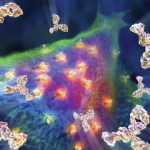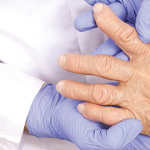“Our discovery was serendipity,” says Antony Rosen, MD, chief of rheumatology at Johns Hopkins University in Baltimore, of the studies that led to the unexpected discovery of antipeptidylarginine deiminase-4 (anti-PAD-4) antibodies as highly specific and potential markers of disease severity in rheumatoid arthritis (RA).
Published last year in Arthritis & Rheumatism (A&R), the groundbreaking study “was novel and extremely interesting,” according to David Karp, MD, PhD, chief of the rheumatic diseases division at the University of Texas Southwestern Medical Center in Dallas, who was not involved in the study.1 “When this is confirmed with more patients, it gives us promise of a biomarker, a possible diagnostic test, and the potential for RA prognosis.”
Prior to four years ago, the Hopkins research team had been working on features that unify autoantigens in the rheumatic diseases, but not specifically on RA. They knew that the noncoded amino acid citrulline is a frequent and specific target of autoantibodies in RA and that this amino acid is formed by the post-translational deimination of arginine in a reaction catalyzed by PADs. “One of the features we found that unified antigens is that they are cleaved by this molecule called granzyme B [GrB],” Dr. Rosen says. “When we found that GrB was actually cleaving PAD-4, the enzyme we were using to generate the citrulline, we knew it was an autoantigen. That was our ‘ah-ha’ moment that led to the published study.”
Funded by the Within Our Reach: Finding a Cure for Rheumatoid Arthritis campaign of the ACR Research and Education Foundation, the innovative work by Dr. Rosen and colleagues found that, although occurring less frequently than anticyclic citrullinated peptides (CCPs), anti- PAD-4 antibodies appear to be more specific than anti- CCP antibodies. Their analysis was conducted in blood samples from patients with established RA, patients with other rheumatic disease, and healthy adults. PAD-4 autoantibodies were found in 42% of RA patients and were very infrequent in controls.
When we found that GrB was actually cleaving PAD-4, the enzyme we were using to generate the citrulline, we knew it was an autoantigen. That was our ‘ah-ha’ moment that led to the published study.
—Antony Rosen, MD
The researchers determined that the anti-PAD-4 antibodies identified a subgroup of anti-CCP-positive patients that is enriched for the PAD14 susceptibility haplotype and more severe disease. Noting that a preliminary analysis shows that anti-PAD-4 antibodies occur less frequently in early disease (12%) compared with established disease, the team believed that anti-CCP antibodies precede the anti-PAD-4 immune response and that autoantibodies or T cells may participate in amplification pathways in RA. In their A&R study, the team suggested that “during conversion from the CCP-positive, asymptomatic phase of RA to the amplifying propagation phase of the disease, novel processing of the polymorphic form of PAD-4 allows generation of unique epitopes not previously tolerized, making initiation of an anti-PAD-4 immune response more likely.”

